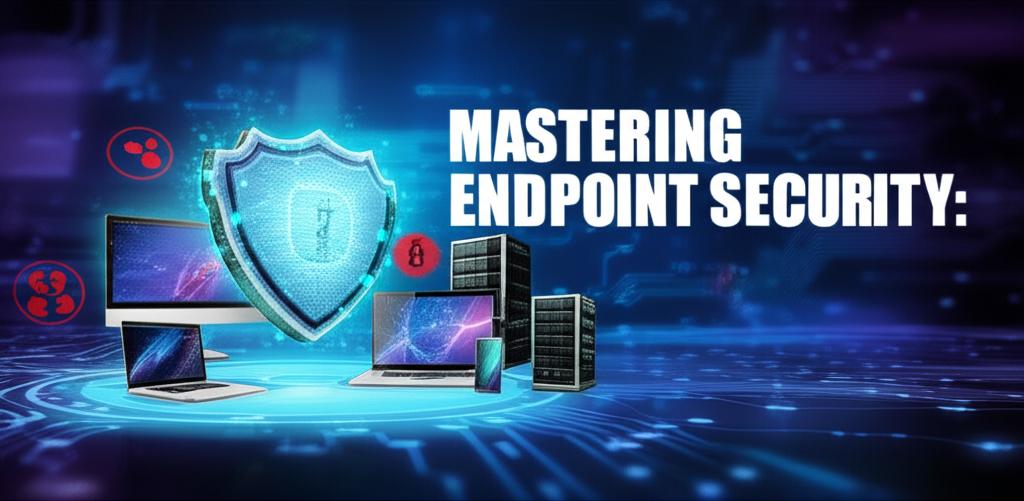Mastering Endpoint Security: Essential Types Explained
What is Endpoint Security?
In today’s interconnected digital landscape, every device that connects to a network from laptops and desktops to smartphones and servers represents a potential entry point for cyber threats. These “endpoints” are the front lines of defense for any organization, making robust endpoint security an absolute imperative. But what exactly is endpoint security, and what are its various forms? Let’s dive deep into the essential types of endpoint security that safeguard your digital assets.
Endpoint security, often referred to as endpoint protection, is a comprehensive approach to protecting the endpoints or entry points of end-user devices, such as desktops, laptops, and mobile devices, from malicious attacks and exploitation attempts. Unlike traditional network security which focuses on perimeter defense, endpoint security extends protection directly to the devices themselves, where data is accessed, stored, and processed. It’s designed to detect, prevent, and respond to threats that make it past other security layers.
Why is Endpoint Security Crucial?
The rise of remote work, BYOD (Bring Your Own Device) policies, and increasingly sophisticated cyberattacks has made endpoint security more vital than ever. Endpoints are frequently targeted because they offer direct access to valuable corporate data. Without adequate endpoint security, a single compromised device can lead to a data breach, significant financial loss, reputational damage, and operational disruption.
Key Types of Endpoint Security Solutions
A multi-layered approach is key to effective endpoint security. Here are the primary types of solutions that organizations deploy:
1. Antivirus and Anti-malware Software
- Description: This is perhaps the most fundamental type of endpoint security. Antivirus software scans, detects, and removes known viruses, worms, Trojans, and other forms of malware. Modern anti-malware solutions go further, often using heuristic analysis and behavioral detection to identify new, unknown threats (zero-day attacks).
- Key Feature: Signature-based detection, behavioral analysis, real-time scanning.
2. Endpoint Detection and Response (EDR)
- Description: EDR solutions provide continuous monitoring of endpoints to detect and investigate suspicious activities. Unlike traditional antivirus, EDR focuses on advanced threat detection, incident response, and forensic capabilities. It collects telemetry data from endpoints, analyzes it for threats, and allows security teams to respond quickly to contain and eradicate attacks.
- Key Feature: Real-time monitoring, threat hunting, incident response, forensic analysis, root cause analysis.
3. Data Loss Prevention (DLP)
- Description: DLP solutions prevent sensitive data from leaving the organization’s control. They monitor, detect, and block unauthorized transfers of confidential information, whether it’s through email, cloud storage, USB drives, or printouts. DLP is crucial for compliance with regulations like GDPR, HIPAA, and CCPA.
- Key Feature: Content inspection, policy enforcement, data classification, monitoring data in motion, rest, and use.
4. Network Access Control (NAC)
- Description: NAC solutions restrict network access for devices based on their compliance with security policies. Before a device connects to the network, NAC can assess its security posture (e.g., up-to-date antivirus, operating system patches) and grant or deny access accordingly. It helps ensure only healthy and authorized devices are on the network.
- Key Feature: Device authentication, policy enforcement, health checks, guest access management.
5. Firewalls
- Description: While often associated with network perimeter security, personal firewalls on endpoints are a critical component of endpoint security. They monitor and control incoming and outgoing network traffic based on predetermined security rules, blocking unauthorized access attempts.
- Key Feature: Traffic filtering, port blocking, intrusion prevention.
6. Virtual Private Networks (VPNs)
- Description: VPNs create a secure, encrypted connection over a less secure network (like the internet). For endpoints, especially remote ones, a VPN ensures that all traffic between the device and the corporate network is encrypted and protected from eavesdropping, making it a vital part of secure remote access.
- Key Feature: Data encryption, secure tunnels, remote access.
7. Email Security
- Description: Email remains a primary vector for phishing, malware, and spam. Email security solutions for endpoints protect users by filtering malicious emails, blocking suspicious attachments, and flagging phishing attempts before they reach the inbox.
- Key Feature: Spam filtering, anti-phishing, malware scanning, attachment sandboxing.
8. Web Security / Secure Web Gateway (SWG)
- Description: These solutions protect endpoints from web-based threats by filtering malicious websites, enforcing internet usage policies, and preventing access to known harmful domains. They act as a checkpoint for all web traffic, ensuring safe browsing.
- Key Feature: URL filtering, content filtering, threat intelligence, cloud-based protection.
9. Patch Management
- Description: While not a software type in itself, effective patch management is a crucial process for endpoint security. It involves regularly updating operating systems, applications, and firmware to fix known vulnerabilities that attackers could exploit.
- Key Feature: Automated updates, vulnerability scanning, compliance reporting.
10. Encryption
- Description: Full disk encryption (FDE) and file-level encryption protect data at rest on endpoints. If an endpoint is lost or stolen, encryption renders its data unreadable to unauthorized individuals, preventing data breaches.
- Key Feature: Data confidentiality, compliance, device protection.
The Future of Endpoint Security: Converged Platforms
Modern endpoint security is moving towards unified platforms, often referred to as Endpoint Protection Platforms (EPP) or Extended Detection and Response (XDR). These platforms integrate multiple security functions—like antivirus, EDR, DLP, and sometimes even email and cloud security—into a single console, providing more holistic protection and simplified management. This convergence offers a more robust defense against increasingly sophisticated and multi-stage cyberattacks.
Conclusion
Protecting endpoints is no longer an option but a fundamental requirement for any organization in the digital age. By understanding and implementing a combination of these essential endpoint security types, businesses can build resilient defenses, mitigate risks, and safeguard their valuable data from the ever-evolving landscape of cyber threats. A proactive and multi-layered approach to endpoint security is the best strategy to ensure continuous protection and peace of mind.







